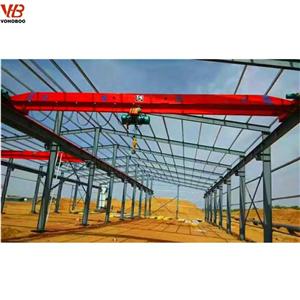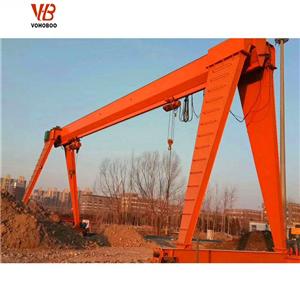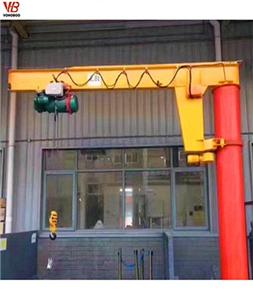What safety procedures should be followed for gantry crane operations?
A gantry crane is a type of crane, and what safety procedures should be followed for gantry crane operations:
(1) The laying of the roadbed and track of the crane shall comply with the regulations, and the grounding resistance of the track shall not exceed 4 Ω.
(2) The track should be straight, the connection bolts of the fishplate should be loose, and there should be no obstacles in the running range of the track and crane. The gantry crane should loosen the rail clamp.
(3) The key inspection items before the operation of the gantry crane shall meet the following requirements:
a. The mechanical structure looks normal, and the connecting parts are not loose;
b. The appearance of the wire rope is good and the rope is firm;
c. All safety limit devices are in good condition
(4) Before the operation, the no-load operation should be carried out. After confirming that the various mechanisms are operating normally, the brakes are reliable, and the limit switches are sensitive and effective before they can work.
(5) Before starting, the sound signal should be sent first. The lifting and lowering operations of heavy objects should be smooth and uniform. Do not use fast when lifting large parts, and should pull the rope to prevent the swing.
(6) The lifting route of heavy objects is strictly prohibited from passing above the person and must not pass through the equipment. When the empty car is walking, the hook should be more than 2m away from the ground.
(7) After lifting heavy objects, you should drive at a slow speed. When driving two cranes at the same time during driving, you should keep the distance of 3m~5m. It is strictly forbidden to push another crane with one crane.
(8) When the operator enters the rack from the control room or performs maintenance and repairs, there should be an automatic power-off interlock or cut off the power beforehand.
(9) When working in a door type, when there is a strong wind of six or more, stop the operation and lock the rail clamp; when the deflection of the main beam of the gantry crane exceeds the specified value, it must be repaired before use.
(10) After the operation, the gantry crane should be parked on the stop line, locked with the rail clamp, and the hook raised to the upper position. Do not hang heavy objects on the hook.
(11) After the operation, the controller should be turned to the zero position, the power supply should be cut off, and the door and window of the control room should be closed and locked.
(12) Before using the electric hoist, check the mechanical and electrical parts of the equipment. The wire rope, hooks, stoppers, etc. should be in good condition. The electrical part should be free of leakage and the grounding device should be good.
(13) Electric hoist should be provided with a buffer, and baffles should be provided at both ends of the track.
(14) The electric hoist is strictly overloaded and hoisted. When lifting, the hand should not be held between the rope and the object. When the lifting object rises, it should be strictly prevented from colliding.
(15) The lifting objects should be bundled firmly. When the electric hoist is hoisting heavy objects, the weight should not exceed 1.5m above the ground. Do not hang heavy objects in the air during work breaks
(16) If an abnormal situation such as odor or high temperature occurs during the operation of the electric hoist, stop the inspection immediately and continue to use it after troubleshooting.
(17) In the lifting, when the heavy object loses control and falls due to the failure, emergency measures must be taken to place heavy objects on the unmanned place;
(18) After the operation is completed, it should be parked at the designated position, the hook is raised, the power is cut off, and the switch box is locked.





